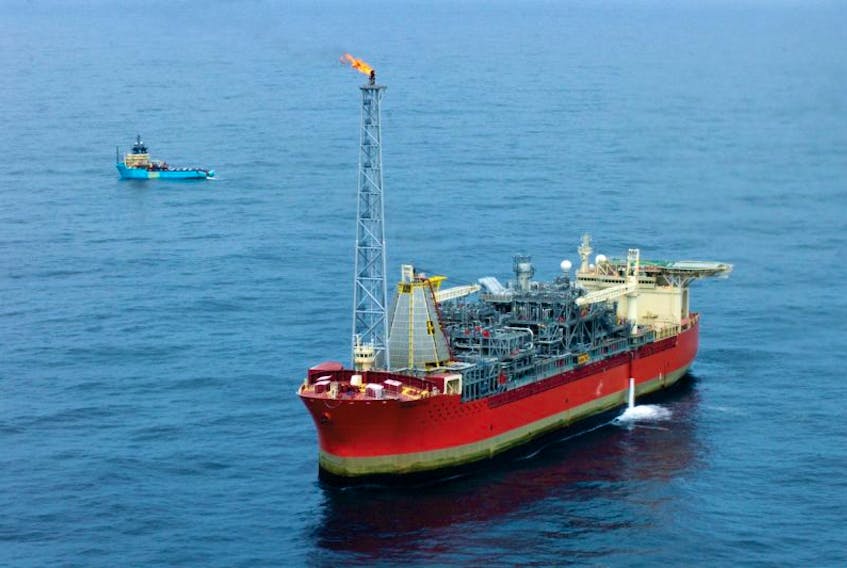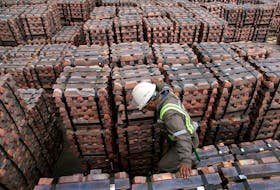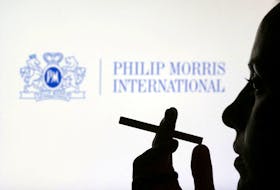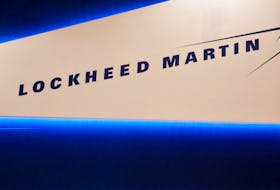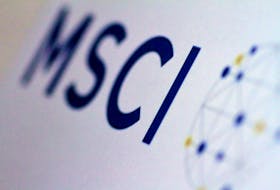ST. JOHN'S, N.L. — Husky said Friday it is preparing to implement a suite of activities as the company continues to restore field integrity and production throughout the White Rose field and satellites in the offshore off the east coast of Newfoundland and Labrador.
The latest efforts are expected to proceed today.
Production from the central drill centre began in January, and the flowline weak-link connector was recovered from the South White Rose Extension (SWRX) in mid-March.
A news release states that careful preparation has lead to the company being ready to move ahead with the next phases of activity.
“This will include displacing fluids in SWRX and other drill centres with water, followed by additional testing and ultimately, production,” the release stated.
“All SWRX flushing activities are weather dependent. We will start by displacing fluids from production flowlines in the South White Rose Extension. Following the flowline connector recovery and plugging activities in March, this is the next step in restoring integrity to other parts of the flowline network as it will allow reconnection of the separated flowline.
“The Canada-Newfoundland and Labrador Offshore Petroleum Board has accepted our plan to flush SWRX.”
Last Nov. 16, 250,000 litres of oil spilled into the ocean after a flowline connector failed near the South White Rose Extension drill centre, about 350 kilometres east of St. John's. The SeaRose FPSO vessel was attempting to restart oil production after a shutdown due to a storm when the spill occurred.
It was the largest oil spill in the province's history.
Husky has been working with the Canada-Newfoundland Offshore Petroleum Board and federal agencies — including the Canadian Coast Guard, Environment and Climate Change Canada, and the Canadian Wildlife Service — as activities ramp up to resume full production.
Using remote operated vehicles (ROVs) from the Skandi Vinland, Husky says, it will connect a hose to the flushing plugs installed in March and flush water from the tanks onboard the Skandi Vinland into the SWRX flowline.
“This will be carried out in each of the two plugged ends,” the release stated. “This displacement will be done at a low flow rate, using three times the amount of fluid currently in the flowline sections to ensure adequate displacement.
“When we talk about flushing, it’s important to note that the fluids will remain in our system and are not being flushed to sea. When production was shut down in November, reservoir fluids (oil, gas, water) remained in the flowline. Displaced fluids will be routed back to the SeaRose FPSO for separation.”
Husky says while the risk of a spill during the process is low, it will be prepared to respond in the event of an incident. Agreed mitigations include having ROVs in the water to observe the operation, aerial surveillance on standby and a support vessel with spill response equipment in the field. Additionally, the activity will begin in daylight hours. SWRX flushing is expected to take approximately two days.
The release stated that once the SWRX flowlines have been displaced with water, Husky will be ready to flush the flowlines at North Amethyst and the Southern Drill Centre to remove hydrocarbons.
Once the flowlines have been displaced to water, the company will isolate the NADC and SWRX drill centres and carry out leak testing at the southern drill centre, which does not utilize the same type of flowline connector.
“This process is similar to the one carried out in January to confirm flowline and subsea equipment integrity at the central drill centre and includes oversight by the regulator and certifying authority, and advice from the original equipment manufacturer,” the release stated.
“Pending a successful leak test, we would seek regulatory approval to resume production from the southern drill centre.”

